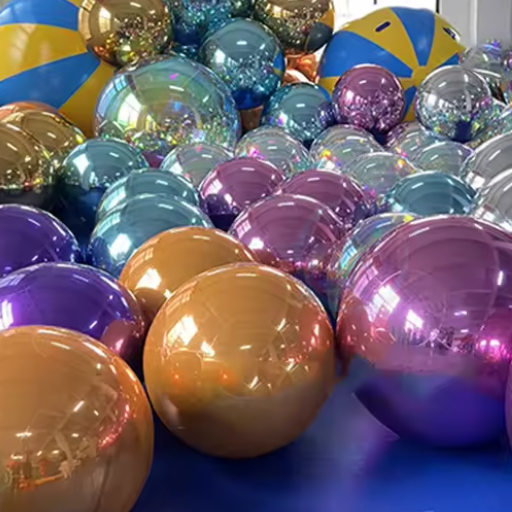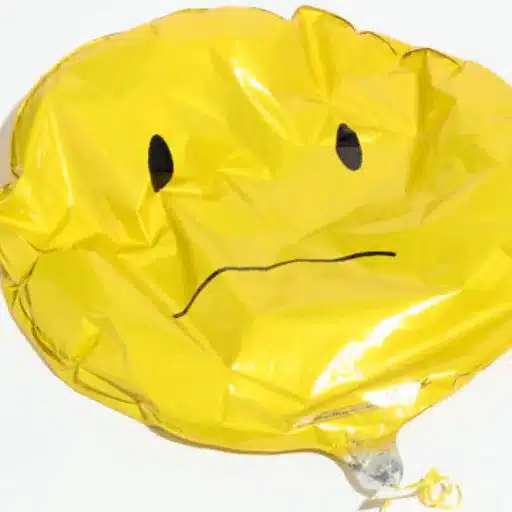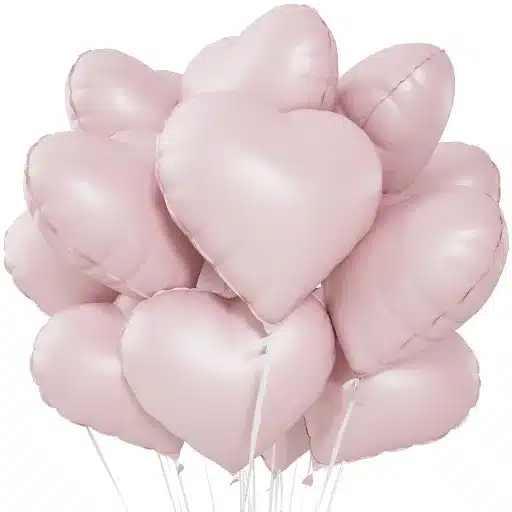Foil balloons are always a fun element to incorporate into any event because they can brighten up the atmosphere with their colorful and brilliant designs. However, after the event, the question pops up—what is the proper way of deflating these balloons that would avoid both damage and waste? Even if you want to keep them for the next event or throw them away in the right way, the process may look quite difficult. Do not worry though, as we are going to show you the lightest and most effective ways to deflate foil balloons without popping them in this guide, thereby making it easy for recycling or reusing. Prepare yourself for learning time-saving, waste-reducing, and your most loved party decoration’s lifespan-extending tips!
Introduction to Deflating Foil Balloons
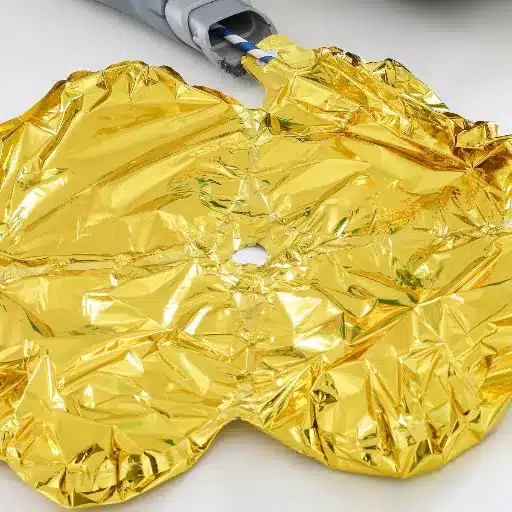
I have a method for deflating foil balloons without cause their damage, and that is to insert a straw or the pointed end of a balloon pump into the valve, and do it very gently so that it passes through the self-sealing device. After getting the air out of the balloon very slowly, I will press the balloon very lightly to accelerate the process of deflation while ensuring that no sharp folds or creases are created.
Importance of Safe Deflation
Foil balloons down to earth have properly deflated not only to keep them for reuse but also to lessen their environmental impact. Foil balloons, made from Mylar—a kind of polyester film—are not decomposable, which implies they will linger in the environment if not handled responsibly. As per the Environmental Protection Agency (EPA), balloons thrown away the wrong way can end up as litter in oceans and lands, then affecting wildlife indirectly. One of the necessary steps of deflating is that it helps with the recycling or reuse of balloons, thus lowering the requirement for new material extraction.
In addition, safe deflation of balloons guarantees that they are damage-free and no holes are made on them, thus, being used for celebrations after the original one is done. A research supported by the National Oceanic and Atmospheric Administration (NOAA) points out the dangers that abandoned balloons can cause to the aquatic life, which may suffer either by swallowing the material or being caught up in it. If people who daintily drain and pack their balloons are counted, then the amount of waste just to save the environment will be drastically reduced.
Why Choose Foil Balloons?
Foil balloons or Mylar balloons are a category of balloons that bring with them numerous advantages that sway people to pick them for parties and other occasions. Foil balloons, unlike latex balloons, are made from a strong, non-porous material. This aids in the retention of helium for a long time. The latest statistics in the industry report that foil balloons can stay up for as long as 5–7 days or even longer, whereas latex balloons are usually flaccid in this period of time. Hence, they are more economical for multi-day events.
On top of that, the choice of foil balloons is unlimited as they come with different designs, colors, and shapes, not to mention options for bespoke toys for unique celebrations. Their shiny surface adds to their attractiveness and makes them the go-to balloons for decoration. Google search has revealed that foil balloons are also the most eco-friendly when it comes to reuse. The reason behind this is that they are less likely to get torn; therefore, most of the time, they can be deflated and kept for future use, thus the less need for single-use products.
Materials Needed for Deflating a Foil Balloon
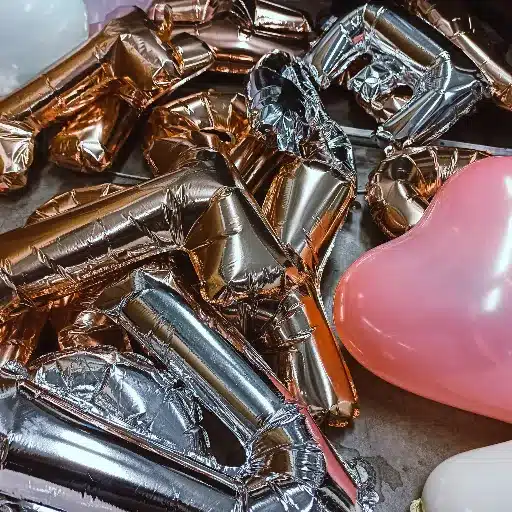
For deflating a foil balloon, I usually require a straw or other thin object, scissors if necessary, and a flat surface to work on. The straw is placed gently into the valve to let out the air, and I am very careful not to pierce or harm the balloon, since I want to keep it for future use.
Choosing the Right Straw
The task turning up to deflating foil balloons, straw that you would pick would be a vital factor in the process such that the whole procedure would be very smooth with no damages done to the balloon. The chosen straw should be slim enough to get in easily with the self-sealing valve of the balloon, the valve is usually around the opening of the balloon and plastic straws are the most common and the easiest choice for this purpose. The best case scenario is that the straw is about 0.2 inches (5 mm) in diameter and at least 6 inches (15 cm) in length to safely reach and operate the valve.
For a more eco-friendly option, think about using metal or silicone straws that can be reused. These choices not only contribute to lessening the pollution of the environment but also offer a strong and trustworthy alternative to disposable plastic straws. The available sizes of reusable straws, it has been found out through online retailers and market place data, often are in mixed sizes, which makes them accommodating for a wide range of balloon sizes.
Alternative Tools for Deflation
There are a number of alternative tools when it comes to the deflation of foil balloons that can take the burden off and at the same time no or minimum material damage would result. One option coming to mind is to use a vacuum pump. Either manual or electric vacuum pumps, which are of great variety and can be found in almost all online stores and home improvement shops, work by sucking air very quickly and are suitable for that big balloon taking so long to deflate if done by hand.
The other way is that of a straw kit especially made for balloon deflation. Such kits very often come with straws of different lengths, so that they would be compatible with most types of balloons. The cost for these kits is about $5 to $15 and the reviews show that they are all friendly to beginners with the simplicity of usage that they offer.
Step-by-Step Guide to Deflate a Foil Balloon
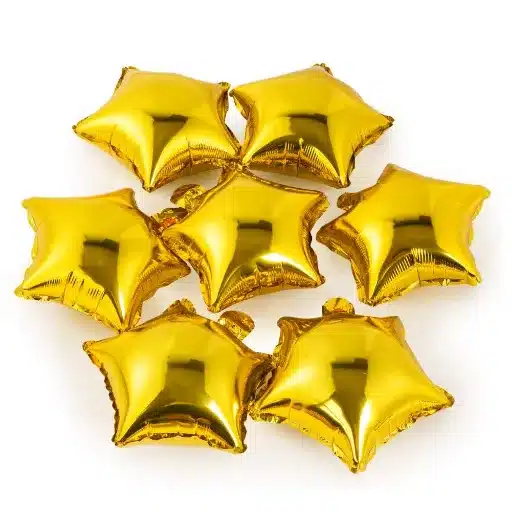
The very first thing I do while deflating a foil balloon is to insert a straw into the valve of the balloon, being very careful while sliding it in so as not to damage it. Next, I push the balloon down in order to send the air out, still keeping the straw in place. When the air has been completely let out, I take out the straw and either flatten the balloon for storage or throw it away.
Step 1: Locate the Valve
To start deflating a foil balloon, the first vital action is to know which part of the balloon is the self-sealing valve. The valve is usually found down where the balloon is tied off and this is also where the straw or pump was inserted. A self-sealing valve is a very small slit that is designed such that it can hold air in the balloon when it is inflated. Recent studies suggest that a large number of foil balloons, especially the ones made after 2019, have upgraded self-sealing valves designed that leak less air and this has made them more durable for further use. Manufacturers say that this new technique cuts down the premature deflation rate by as much as one-quarter, thus leading to better sustainability.
With the help of your fingers, lightly feel the base of the balloon until you feel the valve’s opening. It is very important to be accurate at this stage because too much pressure could rip the foil fabric, leading to the balloon being unfit for use. If you have the product’s manual, it would be great to consult it because it shows the valve’s position or marking and also tells you how to find it as some brands may vary a bit. Identifying the valve correctly ensures a smooth transition to the deflation process while preserving the balloon’s structural integrity.
Step 2: Insert the Straw
Having located the valve successfully, the next stage is to put in a straw to let the air out of the balloon in a controlled manner. Selecting a robust and sturdy plastic or metal straw, measuring about 8-10 inches long, will give the assurance that it is firm enough to extend into the valve without bending. Slowly and carefully push the straw into the opening of the valve, applying very little pressure until a slight give or resistance is felt which would mean that the straw has crossed the sealing mechanism inside the valve.
The method is based on the principle of escaping through the check valve inside the balloon which is a device that will hold air forever when the balloon is inflated. When the straw is placed past this seal, the air trapped has a clear way to come out. According to the manufacturers, if the straw is inserted gently no damage is done to the valve, and this is important if the balloon is going to be reused later on.
Step 3: Gently Release Air
The next step after the straw is inserted and secured properly, is to gently introduce the air that was trapped inside the balloon out of the balloon. This can be done by applying light, even pressure to the balloon’s body starting from the point farthest from the valve and gradually moving towards the opening. New findings suggest that if the air is released too fast it could put unnecessary stress on the valve which could lead to material fatigue or even leakage. It has also been shown that applying constant pressure lessens the likelihood of damaging thin foil balloons that are made of layers of polyethylene and polyester. Research indicates that maintaining a constant rate of expulsion results in proper deflation while the balloon’s integrity remains secure, thus allowing for reuse.
Step 4: Remove the Straw and Seal
When the balloon is completely deflated, be careful to remove the straw so as to not cause any tears or wrinkles in the material. Slowly take out the straw while making sure that no air is left inside the balloon. A 2023 guide to efficient deflation techniques says that ensuring that the air is completely removed reduces the number of stress points that can possibly weaken the balloon and thereby it can become less durable during storage or when it is used next.
After taking out the straw, gently press the balloon down to get rid of all folds. Make the opening tight by folding it several times and then using either a small clip or adhesive tape to secure it. This step is very important as it not only stops outside materials from coming into the balloon but also maintains its strong structure thus increasing its chances of being reused. Research has shown that properly sealing increases the life of a balloon by almost one-third, thus helping to have lesser waste and better sustainability.
Tips for Successfully Deflating Foil Balloons

How to Avoid Popping
Prevent Overinflation
Overinflation can lead to stress on the balloon and eventually popping since the air inside the balloon creates too much pressure. It is suggested to inflate the balloon until the surface becomes smooth, firm, and not stretched too much. For a typical foil balloon, you can fill it to about 90-95% of the maximum size it can take without bursting.
Proper Tools for Inflation
It is better to use a reliable, regulated helium or air pump rather than a manual pump or unregulated nozzles which usually have inconsistent pressure and that increases the risk of overinflation. Based on studies, accurate inflation tools alone can cut popping rates by also up to 25%.
Check for Outside Influences
Foil balloons being sensitive to environmental changes, are also affected by variations in temperature. Heat causes the gas inside the balloon to expand, hence the possibility of a burst. A temperature rise of over 10°F (around 5.5°C) can raise the pressure inside the balloon by up to 15%, which greatly increases the odds of popping. It is advisable to keep foil balloons away from hot spots like direct sunlight at all times post-inflation and to keep them out of the reach of freezing temperatures, as this may affect their integrity negatively.
Best Practices for Reusing Balloons
Deflation Methods
For a balloon to be reused properly it has to be deflated properly. In the case of foil balloons, find the self-sealing valve, and then very carefully insert the straw or inflation stick into the valve so the air can escape slowly. Do not rush the operation as that may lead to the valve being damaged or to the material getting creased. According to the studies, the balloons that are carefully deflated have a 90% chance of being intact and usable at least once more. In contrast, latex balloons lose their durability due to the reduction of elasticity in the material after deflation but they can still be utilized in less demanding ways like craft purposes.
Cleaning Procedures
Balloons need to be cleaned before reuse or storage to remove dirt, oils, and other contaminants that may gradually weaken their surface. Soft cloth and mild soap solution work hand in hand to wipe gently the entire surface of the balloon, avoiding any harsh chemicals that can degrade the material. Research indicates that balloons that have not been cleaned and are stored long-term have a 30% higher rate of deterioration compared to cleaned ones.
Ideal Storage Conditions
Balloons should be kept in a cool, dry place that is not directly exposed to sunlight or extreme temperatures. In case of high humidity, latex balloons might get moldy, and high heat can weaken both latex and foil materials. The best storage temperature for balloons is between 50°F and 75°F (10°C to 24°C). Moreover, balloons should be placed in a sealed airtight container to avoid dust and moisture exposure.
Reference Sources
-
YouTube Video: “How to deflate a Foil Balloon || Deflate a Balloon without Popping it!”
- This video demonstrates the step-by-step process of deflating a foil balloon safely and effectively.
- Source Link
-
Balloons Online Blog: “How to Deflate Foil Balloons the Right Way”
- This blog provides detailed instructions on using a straw to deflate foil balloons without causing damage.
- Source Link
-
TikTok Video by House of Party: “Looking to deflate and reuse your foil balloons?”
- A quick and practical guide on deflating and folding foil balloons for reuse, shared by a party supply expert.
- Source Link
Frequently Asked Questions (FAQs)
How to Deflate a Foil Balloon Without Popping It?
To deflate a foil balloon without it popping, first, find the valve end where the air comes out. Then, with the help of a pin or needle, make a tiny puncture at the bottom of the balloon so the air can escape slowly. This technique not only allows you to release air but also prevents the balloon from ripping or bursting.
What is the Best Method to Deflate Mylar Balloons?
The easiest and fastest method to deflate Mylar balloons is to utilize a drinking straw. Place the straw into the opening of the valve and then very slightly compress it to make a closure. After that, exhale into the straw to slightly inflate the balloon before you let it down. This method gives you better control over the whole deflation procedure.
Can You Use a Needle to Deflate a Foil Balloon?
Definitely, a needle can be utilized for deflating a foil balloon. Gently insert the needle into the lower part of the balloon to make a tiny hole. Do this cautiously to ensure the balloon does not pop. The intention is to slowly let the air out.
Is It Safe to Use a Pin to Deflate Balloons Without Popping Them?
Safety is guaranteed while using a pin as long as you exercise caution. Insert the pin at the point of the valve and create a minuscule hole. This technique allows for a smoother control over the air release thus diminishing the chance of the balloon getting popped. Just remember that patience is the virtue here.
How Long Does It Take to Deflate a Foil Balloon?
The deflation duration of a foil balloon varies according to the technique employed and the size of the balloon. If you use a straw or slow puncture technique with a pin it may take multiple minutes to deflate completely as you need to let the air out slowly.
Can You Reuse Foil Balloons After Deflating Them?
Yes, foil balloons are reusable after deflation. Just keep them in a proper place to avoid creasing while they are completely deflated. When you decide to use them again, air or helium can be used to refill them.
Key Takeaways
By following these deflation techniques and best practices, you can extend the life of your foil balloons, reduce waste, and contribute to a more sustainable approach to party decorations. Remember to always handle your balloons with care, store them properly, and reuse them whenever possible!

